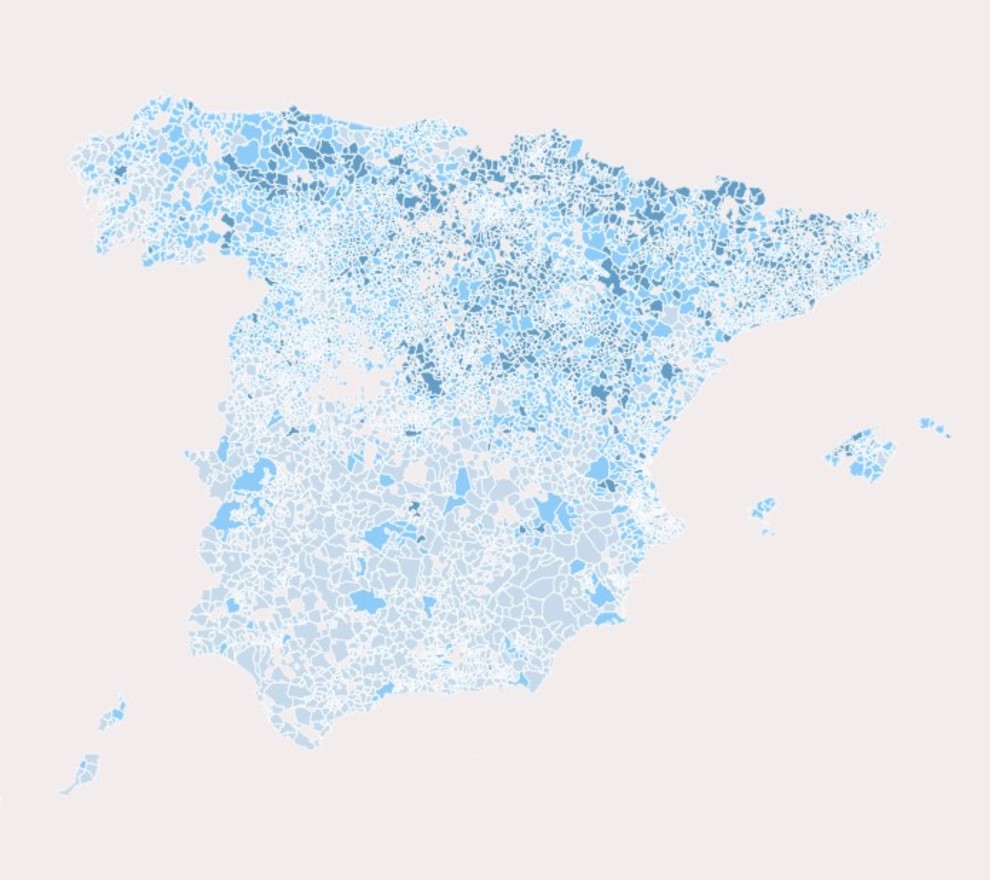MARIA ALBALAT BEAUTIFUL
Madrid
GABRIELA GALARZA
Madrid
Updated Friday, October 7, 2022-17:40
Share on Facebook
Share on Twitter
send by email
Comment
This Friday the
National Institute of Statistics (INE)
has published the 2020 Household Income Distribution Atlas, a statistic that shows the distribution of average income in those municipalities with more than 2,000 inhabitants.
In this way, we find ourselves again with a map clearly divided between north and south.
According to the economist José Alberto Martínez Crisol, it is "the same photograph as always", but with "increasingly evident" inequalities.
The municipalities with the highest average annual net income are:
Pozuelo de Alarcón
(Madrid) with an average of 26,009 euros, Matadepera (Barcelona), with 22,806;
and Boadilla del Monte (Madrid), with 22,224 euros.
However, the autonomous community that stands out the most for the average salary of its constituencies is the
Basque Country
, since 89% are among the 25% with the highest income in Spain.
The map allows you to dive through each of the municipalities with more than 2,000 inhabitants to check what the average annual income was during the year of the pandemic.
The provinces that lead this ranking are Guipúzcoa (16,399 euros), Madrid (15,579 euros) and Vizcaya (15,555 euros).
Martínez affirms: "The productive fabric of the north is more diversified, but above all it has a great capacity to retain qualified human capital, which is related to higher incomes."
On the other hand, the municipalities
with more than 2,000 inhabitants
that presented the lowest income figures per inhabitant in 2020 are all located in Andalusia: El Palmar de Troya, in Seville (6,785 euros);
Iralloz and Albuñol, both in Granada, with 7,036 and 7,061 euros, respectively;
Huesa, in Jaén, with 7,080 euros, and Pruna, in Seville, with 7,219 euros.
Extremadura is another community that stands out for its low income, in fact, 83% of its inhabitants have an income below 10,000 euros net per year.
Martínez Crisol explains that the economy of the south is based on the secondary and tertiary sector, which implies "lower wages."
In addition, the expert points to socio-cultural customs as another cause of this situation, since large families are very common in Andalusia.
For the economist, the way to correct it would be through the use of resources such as European funds and the natural conditions of the territory, which would serve, in turn, to promote the ecological transition.
Conforms to The Trust Project criteria
Know more
Rent
INE
Articles Gabriela Galarza

